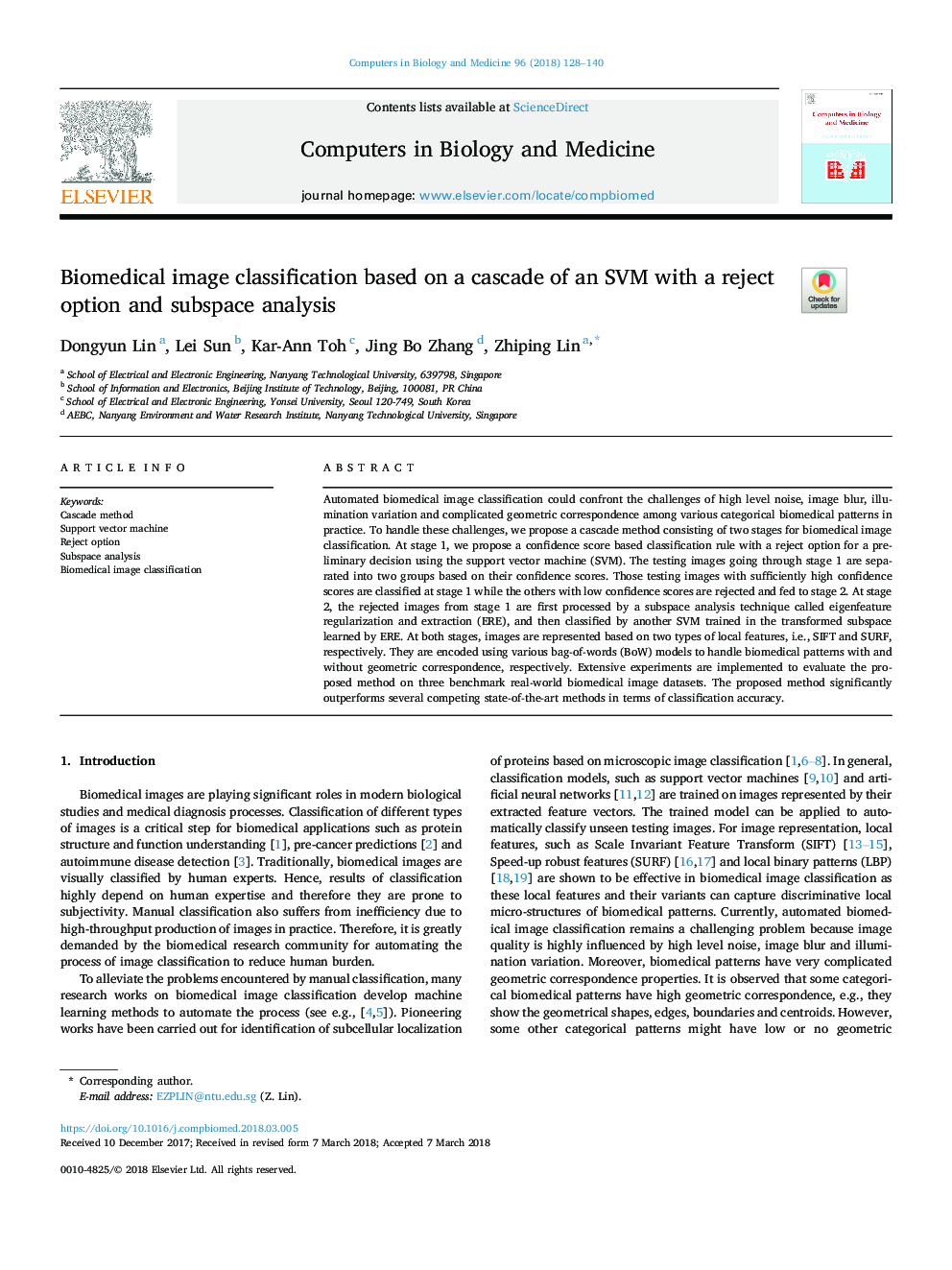| Article ID | Journal | Published Year | Pages | File Type |
|---|---|---|---|---|
| 6920566 | Computers in Biology and Medicine | 2018 | 13 Pages |
Abstract
Automated biomedical image classification could confront the challenges of high level noise, image blur, illumination variation and complicated geometric correspondence among various categorical biomedical patterns in practice. To handle these challenges, we propose a cascade method consisting of two stages for biomedical image classification. At stage 1, we propose a confidence score based classification rule with a reject option for a preliminary decision using the support vector machine (SVM). The testing images going through stage 1 are separated into two groups based on their confidence scores. Those testing images with sufficiently high confidence scores are classified at stage 1 while the others with low confidence scores are rejected and fed to stage 2. At stage 2, the rejected images from stage 1 are first processed by a subspace analysis technique called eigenfeature regularization and extraction (ERE), and then classified by another SVM trained in the transformed subspace learned by ERE. At both stages, images are represented based on two types of local features, i.e., SIFT and SURF, respectively. They are encoded using various bag-of-words (BoW) models to handle biomedical patterns with and without geometric correspondence, respectively. Extensive experiments are implemented to evaluate the proposed method on three benchmark real-world biomedical image datasets. The proposed method significantly outperforms several competing state-of-the-art methods in terms of classification accuracy.
Related Topics
Physical Sciences and Engineering
Computer Science
Computer Science Applications
Authors
Dongyun Lin, Lei Sun, Kar-Ann Toh, Jing Bo Zhang, Zhiping Lin,
